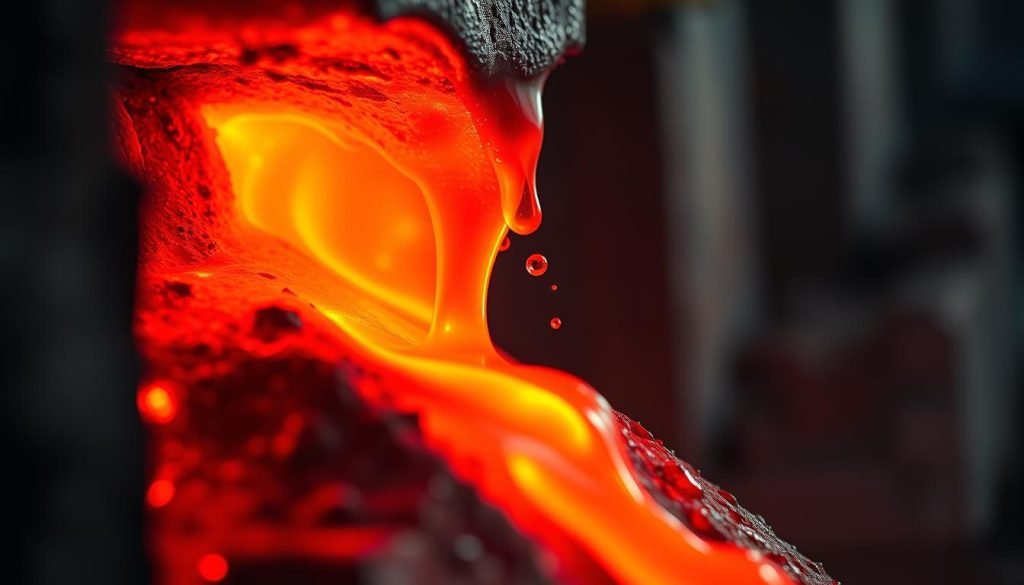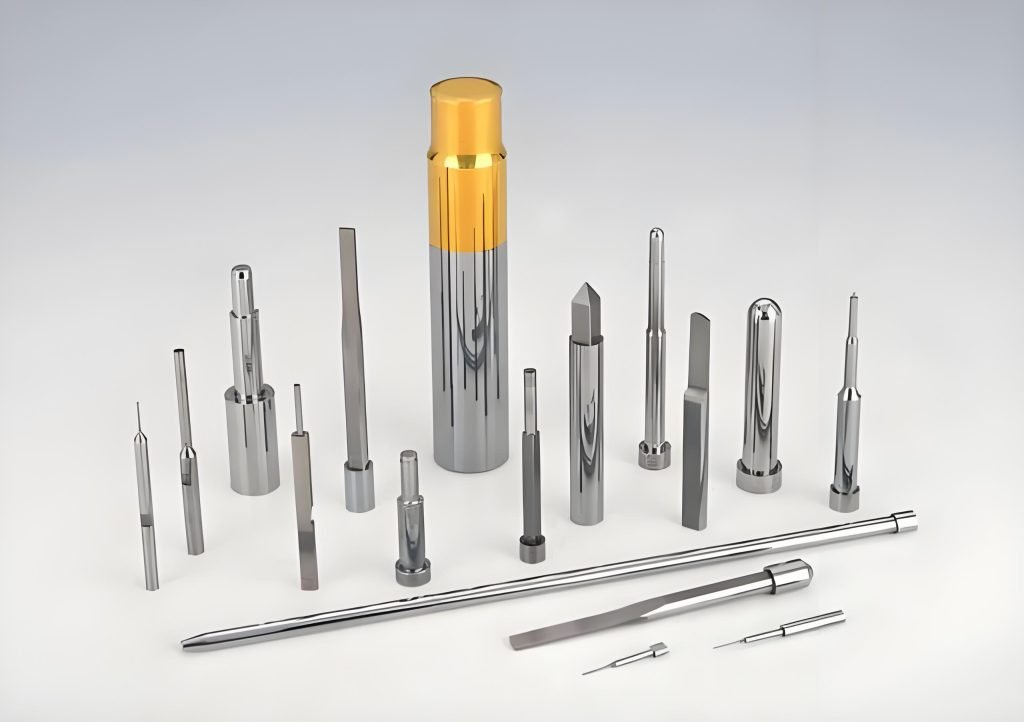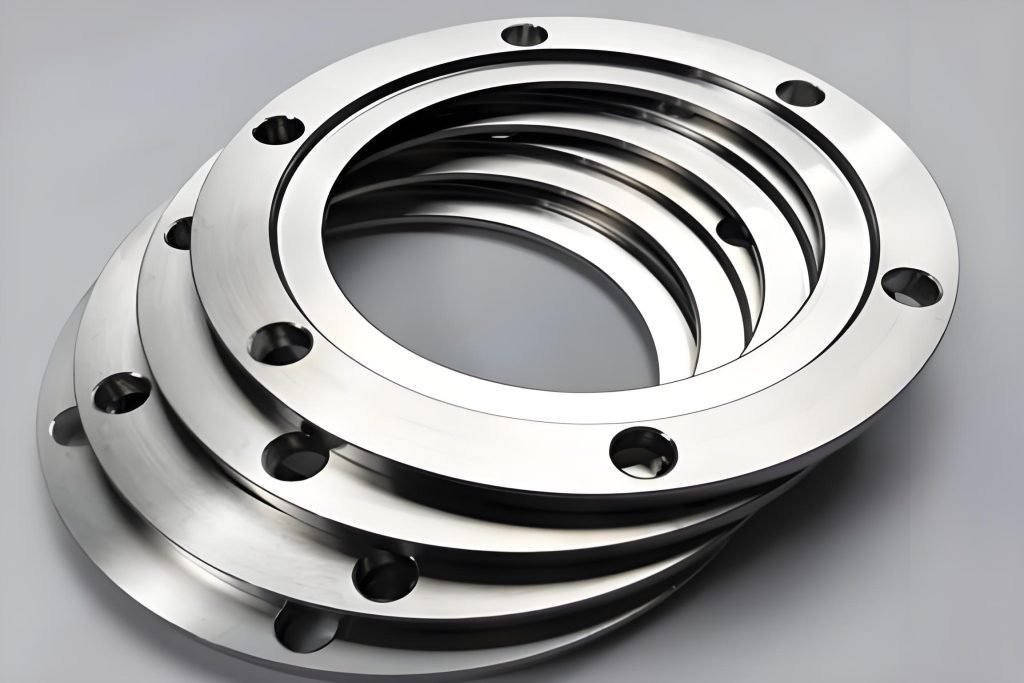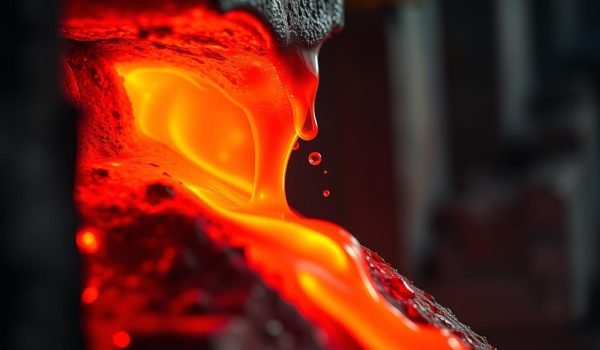Did you know that the melting point of steel, a critical property for its industrial applications, varies between 2500-2800°F (1371-1540°C)? This range is due to steel being an alloy, primarily made of iron and carbon, with additional elements like chromium and nickel in stainless steel.

Understanding the melting point is essential for manufacturing processes and selecting the right material for high-temperature environments. As an alloy, steel exhibits a melting range rather than a single temperature, influenced by its composition. This guide will explore the science behind steel melting points, variations among different types, and practical applications.
Understanding the Basics of Melting Temperature
The concept of melting temperature is fundamental to understanding how metals behave under different conditions. When exposed to a high enough temperature, metals melt and change their state from solid to liquid. This phase change is critical in various industrial processes.
The melting point represents the specific temperature at which a metal transitions from its solid state to a liquid state. At this point, the metal exists in a state of equilibrium between solid and liquid phases.
What Happens When Metal Reaches Its Melting Point
When a metal reaches its melting point, additional heat energy is used to break molecular bonds rather than increase the temperature. This process involves the breaking of metallic bonds, allowing atoms to move more freely.
The Science of State Changes in Metals
The science behind metal state changes involves the transformation from a solid, orderly crystalline structure to a more disordered liquid state. Before complete melting, metals often go through a softening phase, becoming more malleable and workable.
The Melting Point of Steel: Range and Variations
Steel, being an alloy, does not have a fixed melting point. Instead, it exhibits a melting range due to its complex composition. This characteristic is crucial for various industrial applications, including manufacturing and fabrication processes.
Why Steel Has a Melting Range Instead of a Fixed Point
Steel is an alloy primarily composed of iron and carbon, along with other elements. The presence of multiple elements with different melting points results in a melting range rather than a single melting temperature. Pure iron, for instance, has a melting point of approximately 2800°F (1538°C). However, when carbon is added to iron to form steel, it causes a phenomenon known as “melting point depression,” lowering the overall melting temperature.
How Alloy Composition Affects Melting Temperature
The specific composition of a steel alloy significantly influences its melting range. Increasing the carbon content generally lowers the melting point. Additionally, other alloying elements can either raise or lower the melting temperature depending on their properties. Understanding this melting range is essential for determining the temperatures required for casting, welding, and other heat-treatment procedures in steel fabrication.
Common Types of Steel and Their Melting Points
The melting point of steel varies significantly across different types, making it essential to understand these differences for optimal material selection. You need to consider the specific characteristics of each steel type to ensure you’re using the most appropriate one for your project.

Carbon Steel
Carbon steel, the most basic form of steel, contains primarily iron and carbon. Its melting point range is between 1370-1540°C (2500-2800°F), with the exact temperature depending on its carbon content. Higher carbon content generally results in a lower melting point.
Stainless Steel
Stainless steel, known for its corrosion resistance due to a minimum of 10.5% chromium content, melts between 1375-1530°C (2500-2785°F). Different grades of stainless steel, such as grade 316 and grade 430, have varying melting points, ranging from around 1375°C to approximately 1510°C.
Cast Iron
Cast iron, with its higher carbon content (2-4%) compared to standard steel, has a significantly lower melting range of 1127-1204°C (2060-2200°F). This characteristic makes cast iron more suitable for casting processes where lower melting temperatures are advantageous.
Factors Affecting the Melting Point of Steel
Understanding the factors that influence the melting point of steel is crucial for various industrial applications. The melting behavior of steel is determined by its composition and external conditions.
Carbon Content and Its Impact
Carbon content significantly affects steel’s melting point. As the carbon percentage increases from 0.1% to over 2%, the melting temperature progressively decreases. This variation is critical in steel production.
Influence of Alloying Elements
Alloying elements like chromium, nickel, manganese, and molybdenum have distinct effects on steel’s melting characteristics. Some elements raise the melting point, while others lower it based on their interaction with the iron-carbon matrix.
External Pressure and Environmental Conditions
External pressure and environmental conditions also play a crucial role. Increased pressure generally raises the melting point by restricting molecular movement. Environmental conditions, such as the presence of oxygen, can affect heat transfer during the melting process.
Why Is The Steel Melting Point Important?
Accurate knowledge of the steel melting point is necessary for optimizing manufacturing processes and ensuring product quality. The melting point of steel is a critical property that affects its performance in various applications.
Industrial Applications and Manufacturing Processes
Understanding the melting point of steel is critical for designing components that will operate in high-temperature environments. In manufacturing processes like casting, welding, and heat treatment, precise knowledge of steel’s melting point ensures optimal process parameters. This prevents issues like incomplete melting or excessive overheating that can compromise product quality.
Safety Considerations in High-Temperature Environments
Safety considerations in industries dealing with molten steel are directly tied to melting point awareness. Proper equipment selection, facility design, and operational procedures all depend on accurately understanding the temperatures at which different steels will liquefy. This knowledge is essential for preventing accidents and ensuring a safe working environment.
Comparing Steel’s Melting Point to Other Metals
Understanding how steel’s melting point compares to other metals is crucial for selecting the right material for high-temperature applications. Steel’s melting point, ranging from 2500-2800°F (1371-1540°C), positions it in the middle range of metal melting temperatures.
Metals with Higher Melting Points
Some metals have significantly higher melting points than steel. Refractory metals like tungsten, with a melting point of 6152°F (3400°C), and molybdenum, at 4748°F (2620°C), are ideal for extreme high-temperature applications where steel fails.
Metals with Lower Melting Points
On the other end, metals like aluminum, melting at 1220°F (660°C), and copper, at 1983°F (1084°C), have lower melting points than steel. Other metals like lead, zinc, gallium, and mercury melt at even lower temperatures, limiting their use in high-temperature environments.
The relative position of steel’s melting point among metals explains its widespread use in construction and manufacturing. It’s high enough to withstand most operational temperatures but low enough to be processed with reasonable energy requirements.
How is Steel Melted?
Understanding how steel is melted is essential for optimizing industrial processes. The melting of steel is a critical step in its production and recycling, involving various techniques and equipment.
Industrial Melting Processes and Equipment
Industrial steel melting primarily occurs in large-scale furnaces. Electric arc furnaces (EAFs) and basic oxygen furnaces (BOFs) are the two predominant technologies used in modern steelmaking. EAFs can reach temperatures up to 3000°C (5432°F), using high-current electric arcs to melt steel scrap and other iron-bearing materials. BOFs operate by blowing pure oxygen onto the molten iron, causing exothermic reactions that generate additional heat and help refine the steel to the desired composition.
Determining the Exact Melting Point in Laboratory Settings
In laboratory settings, precise melting point determination is achieved using specialized equipment like differential scanning calorimeters (DSC) or the capillary method. The capillary method involves packing a steel sample into a thin-walled capillary tube alongside a precision thermometer. The temperature is gradually increased at a controlled rate until the sample completely liquefies, at which point the temperature is recorded as the melting point. This method allows for accurate determination of the melting point, crucial for research and quality control.
Precision Steel CNC Machining Solutions for High-Temperature Applications
For applications where high temperatures are a factor, precision steel CNC machining offers tailored solutions. When metals are exposed to extreme heat, their tensile strength is affected. At around 1000°C, stainless steel becomes more rigid and easier to bend. The melting point of steel, along with its chromium content, plays a crucial role in determining its resistance to oxidation and sulfidation.
Selecting the Right Steel Grade
Choosing the appropriate steel grade for high-temperature applications requires considering both the melting point and other thermal properties. High-chromium stainless steels or specialized heat-resistant grades like H-series stainless steels offer superior performance due to their stable microstructure and oxidation resistance.

Custom Steel Fabrication
Custom steel fabrication for heat-resistant components often involves specialized post-processing treatments. Techniques like solution annealing or precipitation hardening enhance the material’s high-temperature stability and mechanical properties, ensuring the component performs well in extreme environments.
Conclusion
Understanding steel’s melting point is crucial for its application. The melting point of steel, an alloy of iron and carbon, ranges from 2500-2800°F (1371-1540°C), varying with composition. Different steel types have distinct melting characteristics, making them suitable for various applications.




